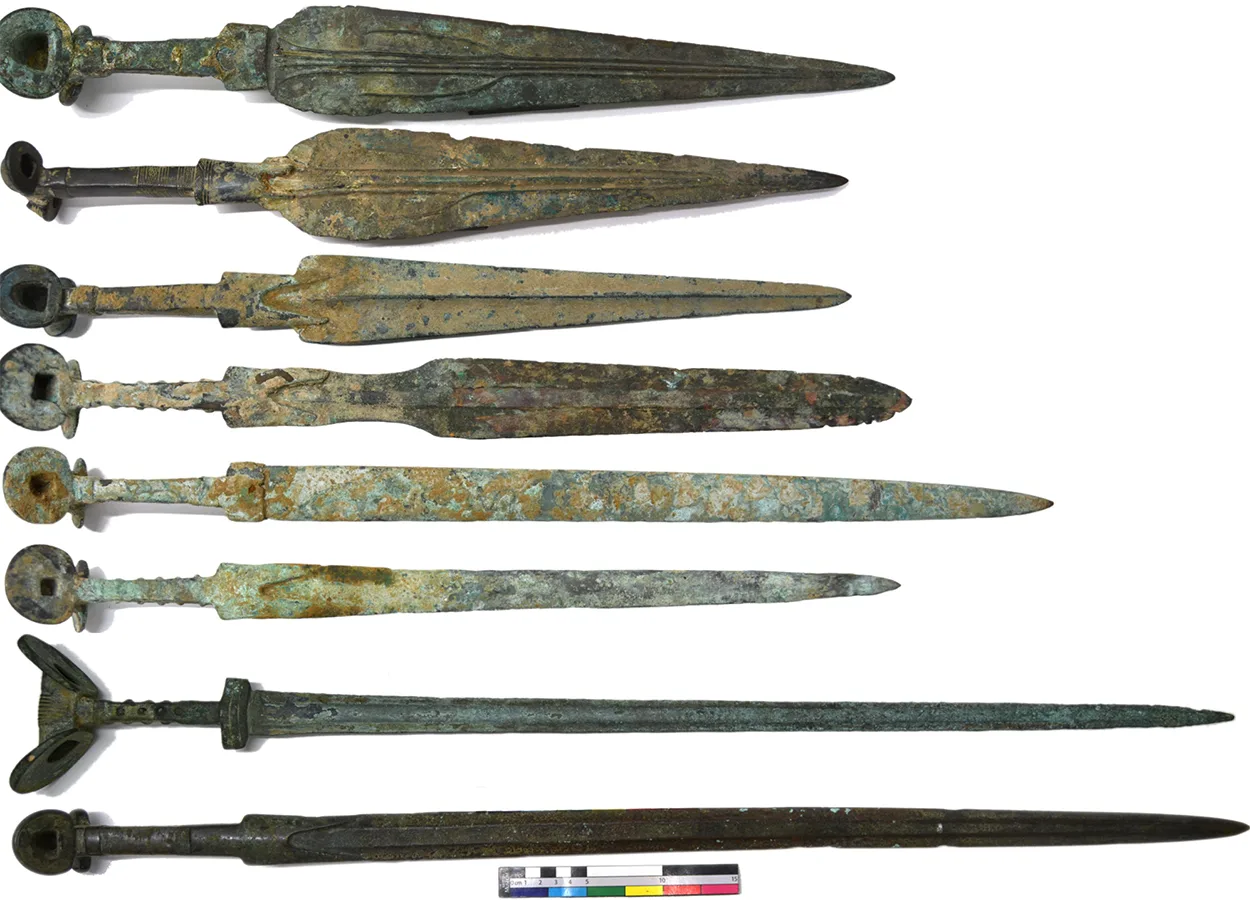A collection of smuggled Iranian swords was seized at Heathrow Airport, London by UK Border Force agents. It was initially thought to be legitimate ancient artefacts but turned out to be forgeries. This discovery calls into question the authenticity of ancient Iranian swords held by many museums.
A recent study has revealed alarming new information about the frequency of antiquities fraud, specifically related to Iranian Iron Age swords. A collection of swords, which had been smuggled into England and seized at Heathrow Airport was initially thought to be legitimate ancient artefacts. However, advanced analysis using neutron tomography has exposed them as fakes. These swords had been tampered with in a way that made them appear intact, but they were pieces of different ancient metals glued together to deceive dealers and collectors.
The study, published in the Journal of Archaeological Science, showed that while the swords were marketed as rare examples of bronze weaponry from the Iron Age, they were actually constructed from iron, or a combination of iron and other metals. Over time, the iron blades had corroded and were replaced with bronze counterparts, in an attempt to enhance their value in the antiquities market. This fraud highlights the vulnerability of bimetallic weapons to modern modifications.
One of the key findings was the presence of glue, lead solder, and drill holes in the swords. These elements were used to attach copper-alloy blades to the original iron hilts, which had decayed over time. A fragment of a modern drill bit was even found in one of the swords. This manipulation was aimed at making the swords appear more complete and therefore more valuable to potential buyers. Interestingly, while no modern metals were used, the forgers relied on ancient metal fragments, further complicating the detection of such frauds.
This discovery raises serious questions about the authenticity of similar artefacts held in museum collections worldwide. Iranian Iron Age swords, first discovered in the Luristan region in 1928, have been widely collected by museums and private collectors. These new findings suggest that many of these items, previously thought to be genuine, could also be forgeries.
Forgers have taken advantage of the demand for these items, knowing that their modifications could go undetected. This has significantly hindered archaeologists’ ability to study the true development of ancient metalworking techniques in Iran. Ancient swords made of both iron and bronze played a crucial role in understanding the transition from the Bronze Age to the Iron Age, a period of great technological importance. However, as lead author Alex Rodzinka of Cranfield University warns, illicit modifications make this task much more complex.
According to Dr Nathaniel Erb-Satullo, a Senior Lecturer in Archaeological Science at Cranfield University and a co-author of the study, separating genuine artefacts from forgeries is essential for advancing knowledge of early metallurgical traditions in Iran. He notes that Iran has been a centre of metallurgical innovation for thousands of years, and the use of advanced imaging techniques such as neutron tomography is critical to preserving this legacy.
The study underscores how the illicit antiquities trade, driven by market demand and forgeries, has not only misled collectors and museums but also undermined the academic understanding of ancient technological transitions. The need for more stringent analyses of such artefacts, especially those held in major museum collections, has never been more apparent. Moving forward, experts hope that neutron tomography and other sophisticated techniques can help untangle the web of antiquities fraud and restore clarity to the study of ancient Iranian metallurgy.
